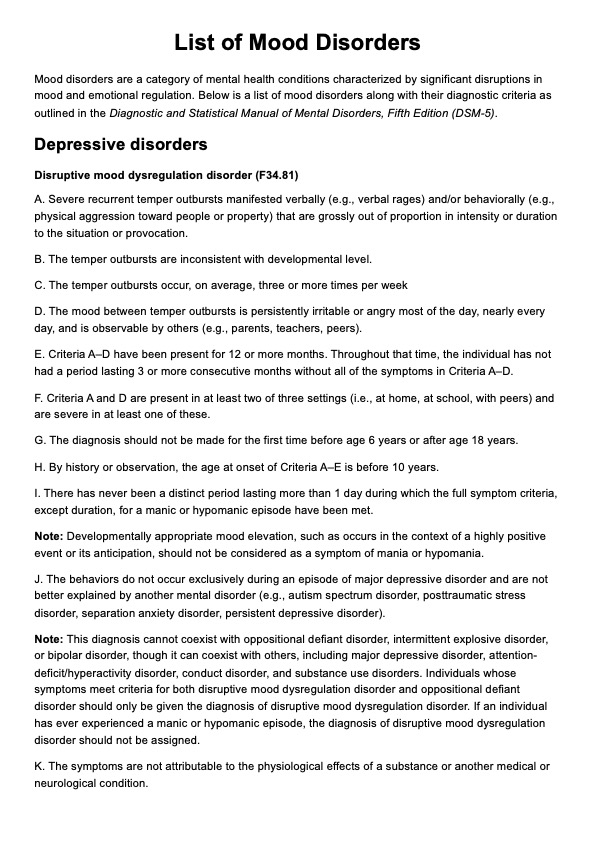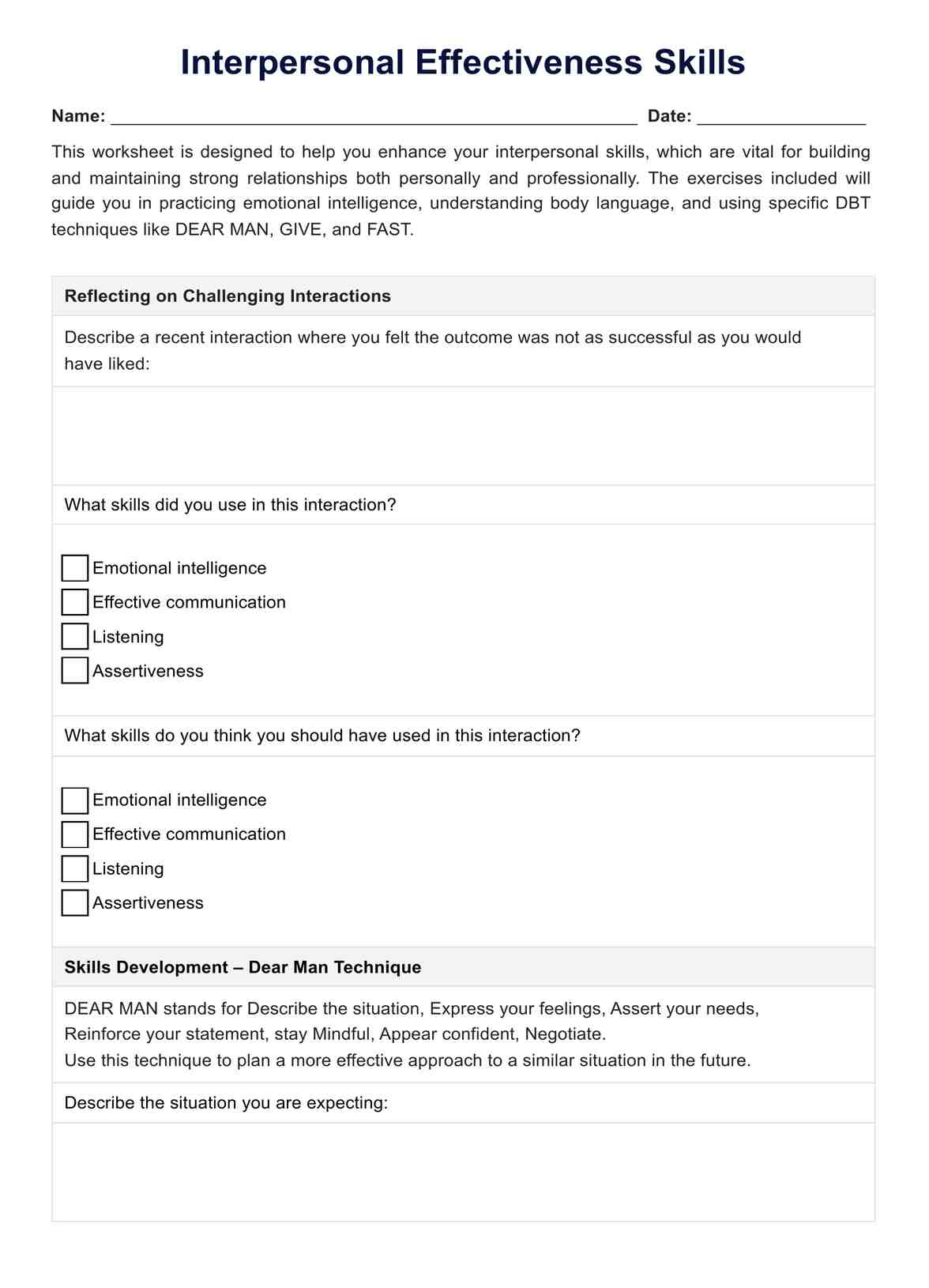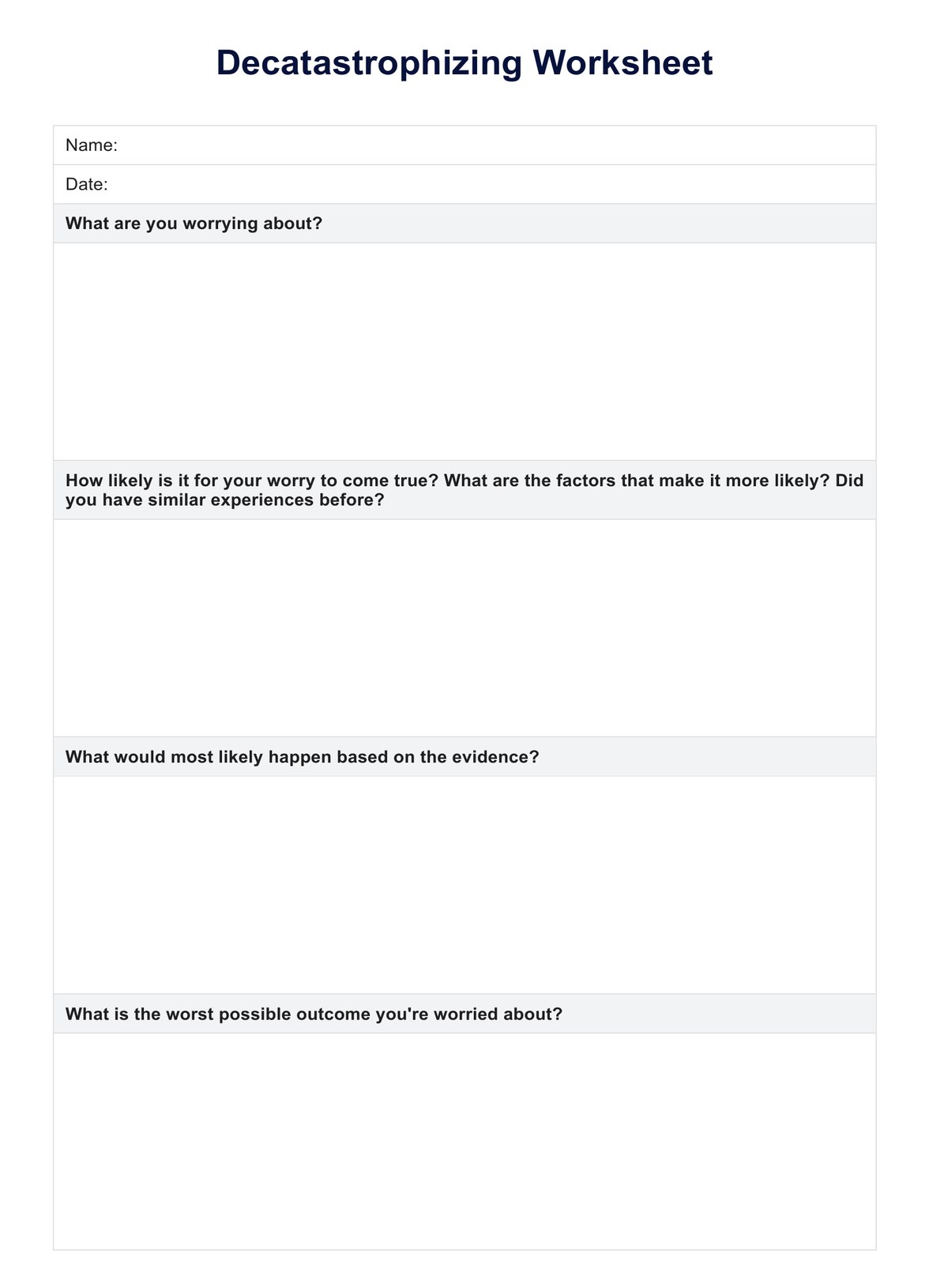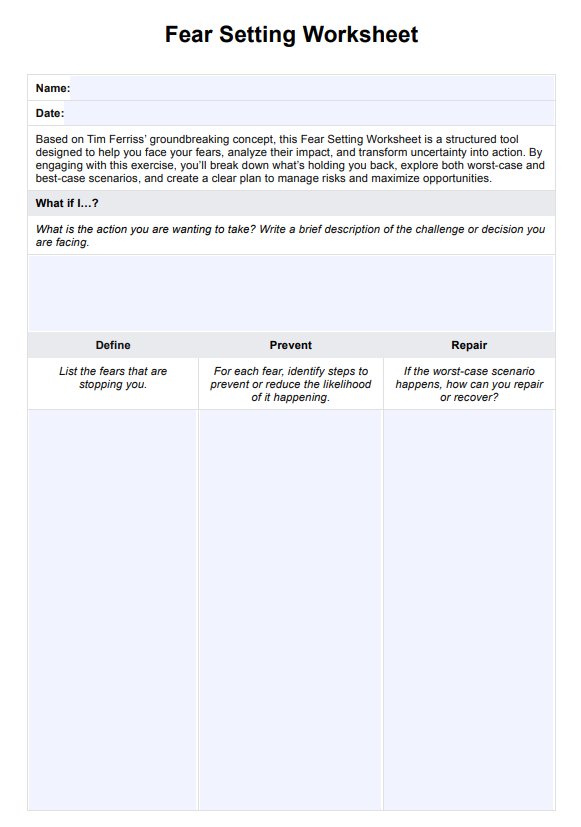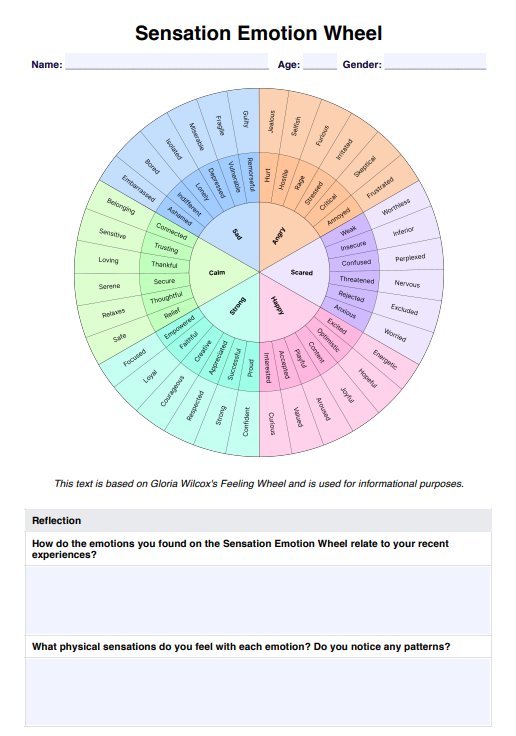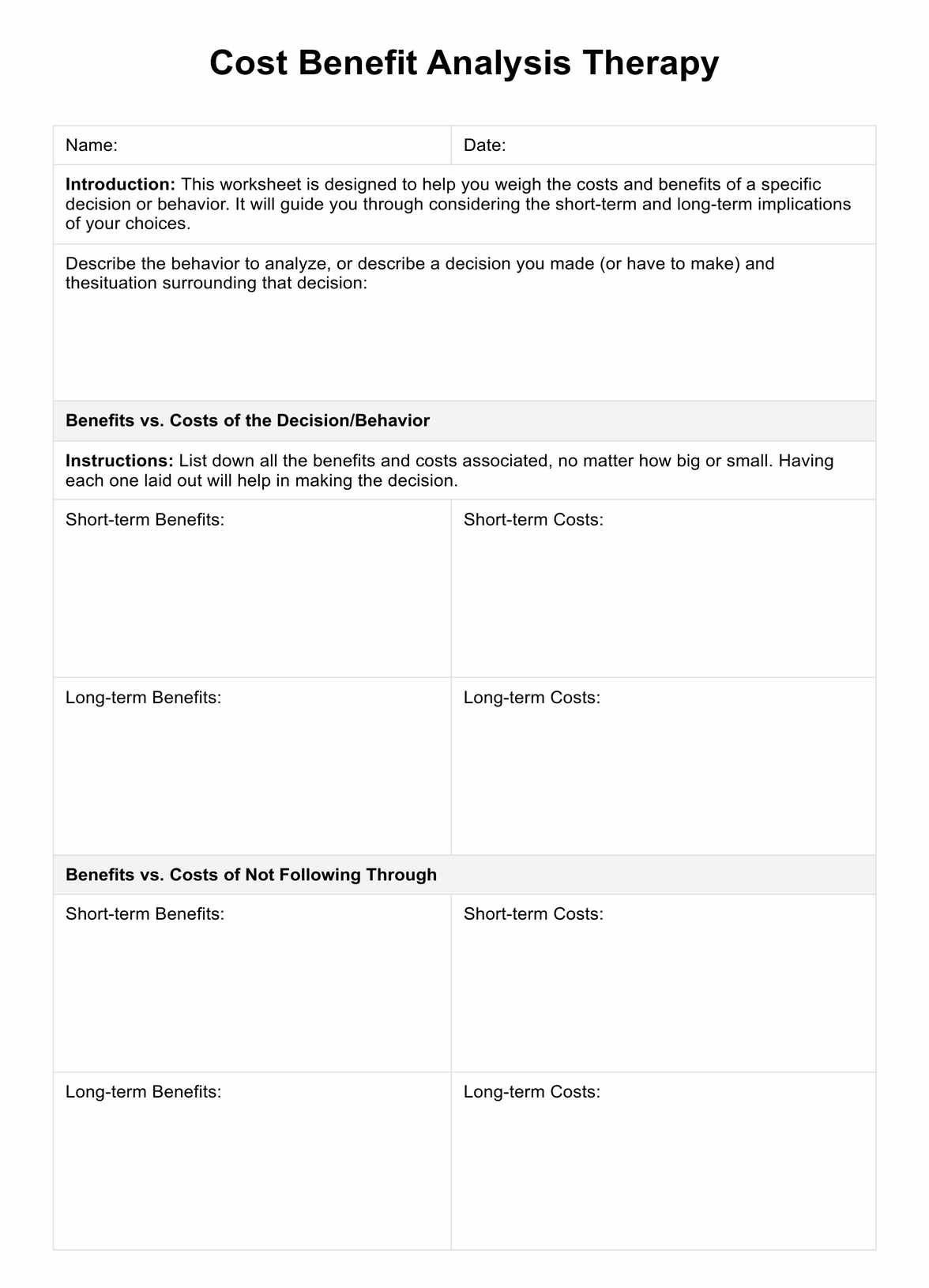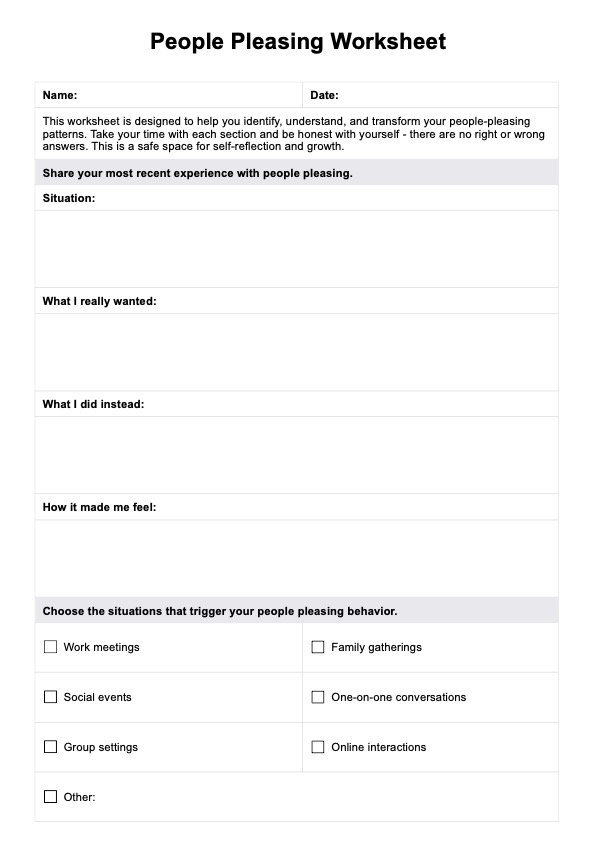Thought Stopping Worksheets
Learn about Thought Stopping Worksheets, how to use them, and the benefits they offer. Get a free printable Thought Stopping Worksheet template and an example to try today.


What Is A Thought Stopping Worksheet?
A Thought Stopping Worksheet is a tool that can help you challenge negative thoughts and replace them with more positive and beneficial ones. The resource offers a structured format for identifying automatic negative thoughts, investigating the evidence for and against them and developing alternative positive thoughts. We have designed this template in order to help healthcare practitioners teach their clients how to improve their thinking patterns. It can be downloaded, shared, and edited it for free, making it a highly convenient and accessible resource for your healthcare practice.
It is critical to recognise that negative self-talk can result from automatic thought processes. This is about people's stream of consciousness, and ideas about themselves as well as the world around them. They are frequently uncontrollable since they are reflexive and automatic. This worksheet, on the other hand, tries to address these thoughts and challenge the beliefs that lead to them. It is critical to incorporate good habitual thoughts rather than negative ones, since this can reduce burnout and boost self-esteem. Many people also have a cognitive bias towards themselves, which can lead to a never-ending cycle of negative opinions. This worksheet tries to break the pattern to encourage positive thinking and the usage of positive adjectives. Cognitive restructuring is important because it can help people learn how to notice negative thoughts to improve their lives for the better.
Quick Tips to Prevent Spiralling Thoughts
- Don’t force positive thinking
- Take out ‘I should’ thoughts
- Challenge the negativity
- Acknowledge how you feel
- Think about the evidence that supports or dispels the thought
- Identify triggers
- Have self-compassion
- Breathe
- Think about what you have learned from negative situations
With this Thought Stopping Worksheet, individuals will be able to gain more control over their thoughts and vastly improve their mood, leading to the achievement of desired clinical outcomes.
Thought Stopping Worksheets Template
Thought Stopping Worksheets Example
How To Use This Thought Stopping Worksheet
Here are the steps involved in using a Thought Stopping Worksheet:
Step 1: Recognize the negative thought
The first step in using the Thought Stopping Worksheet is to identify the negative thought you wish to eliminate. This could be a recurring negative thought pattern, a self-critical inner voice, or a specific negative thought that you are experiencing right now.
Step 2: Record the negative thought.
Once you've identified the negative thought, record it in the worksheet's "Negative Thought" column. Be as specific as possible, and try to phrase your thoughts concisely and clearly.
Step 3: Challenge the negative thought.
Fill out the worksheet's "Challenge" column with a rational and evidence-based counter-argument to the negative thought. This could include questioning the validity of the negative thought, looking for evidence to contradict it, or reframing it in a more positive light.
Step 4: Make a positive affirmation.
Fill in the "Positive Affirmation" column of the worksheet with a positive and empowering statement that counteracts the negative thought. This could be a declaration of self-love, self-acceptance, or self-encouragement.
Step 5: Use the worksheet on a regular basis.
Use the Thought Stopping Worksheet on a regular basis, especially when you notice yourself engaging in negative self-talk or having distressing thoughts. You can train your mind to interrupt negative thought patterns and replace them with more positive and empowering thoughts by using the worksheet consistently over time.
Remember that this worksheet is only a tool, and it is your responsibility to actively challenge and reframe negative thoughts in your daily life. You can learn to cultivate a more positive and compassionate inner dialogue with practice and persistence.
Who Can Use These Printable Thought Stopping Worksheets (PDF)?
Anyone can use a printable Thought Stopping Worksheet to challenge negative thoughts and improve their mood. This resource is especially beneficial for patients dealing with anxiety, depression, or other mental health issues. The Thought Stopping Worksheet can be used alongside various treatment methodologies. Provided your client is trying to decrease their negative thoughts and increase their positive thoughts, then this resource should be highly applicable.
Additionally, there is a range of different healthcare practitioners that will be able to implement this resource, including:
- Life Coaches
- Counselors
- Therapists
- Psychologists
- Psychiatrists
If you don’t see your line of care in the above list, don’t worry, this doesn’t mean you can’t take advantage of this worksheet. As long as you are focusing on overcoming negative thought patterns, then this worksheet will be highly valuable for you.
Why Is This Form Useful For Life Coaches?
Thought Stopping Worksheets can be beneficial to life coaches because they provide a structured method for assisting clients in identifying and challenging negative thoughts. Life coaches can help their clients improve their mood, boost their self-esteem, and achieve their goals by using a Thought Stopping Worksheet.
Additionally, this Thought Stopping Worksheet can help life coaches to facilitate deeper self-awareness and mindfulness with their clients.
Clients can gain a greater sense of control over their thoughts and emotions through identifying negative thought patterns and replacing them with positive alternatives.
This can lead to improved overall mental health and wellbeing, and increased motivation and confidence in achieving their desired outcomes.
Finally, Thought Stopping Worksheets provide a tangible tool for tracking progress and evaluating the effectiveness of coaching interventions in the long run.

Benefits of Thought Stopping Worksheets Template
Here are some of the benefits of using a Thought Stopping Worksheet, which can assist you in interrupting negative thought patterns, practicing mindfulness and self-awareness, promoting self-compassion and self-acceptance, and providing a tangible tool for self-improvement.
Helps to interrupt negative thought patterns
Negative self-talk and thought patterns can be difficult to overcome. A Thought Stopping Worksheet can assist you in identifying negative thoughts and confronting them with evidence-based counter-arguments. You can begin to break the cycle of negative self-talk and cultivate a more positive mindset by interrupting negative thought patterns in this way.
Encourages mindfulness and self-awareness
When you use a Thought Stopping Worksheet, you are practicing mindfulness and self-awareness. By observing your thoughts and emotions in a nonjudgmental manner, you can begin to identify patterns and triggers that contribute to negative self-talk.
This self-awareness can help you gain a better understanding of your own thoughts and behaviors and make positive changes in your life.
Promotes self-compassion and self-acceptance
Negative self-talk can have a negative impact on our self-esteem and confidence. A Thought Stopping Worksheet can promote self-compassion and self-acceptance by challenging negative thoughts and replacing them with positive affirmations. When you practice self-compassion, you treat yourself with kindness and understanding, even when you make mistakes or face difficult situations.
This can help to boost your resilience and self-esteem.
Provides a tangible tool for self-improvement
A Thought Stopping Worksheet is a tangible tool for tracking your progress and monitoring your growth. By using the worksheet on a regular basis, you can begin to notice patterns in your thoughts and behaviors, allowing you to make positive changes over time. The worksheet can also help you to set goals and intentions for your personal growth, and track your progress towards achieving them.
Commonly asked questions
A Thought Stopping Worksheet is a tool that can assist you in challenging negative thoughts and replacing them with more positive and beneficial ones.
A Thought Stopping Worksheet can be used whenever you are having negative thoughts that are affecting your mood and well-being.
Simply fill in the blanks with your own situation, automatic negative thought, evidence, and alternative positive thought to create a Thought Stopping Worksheet.


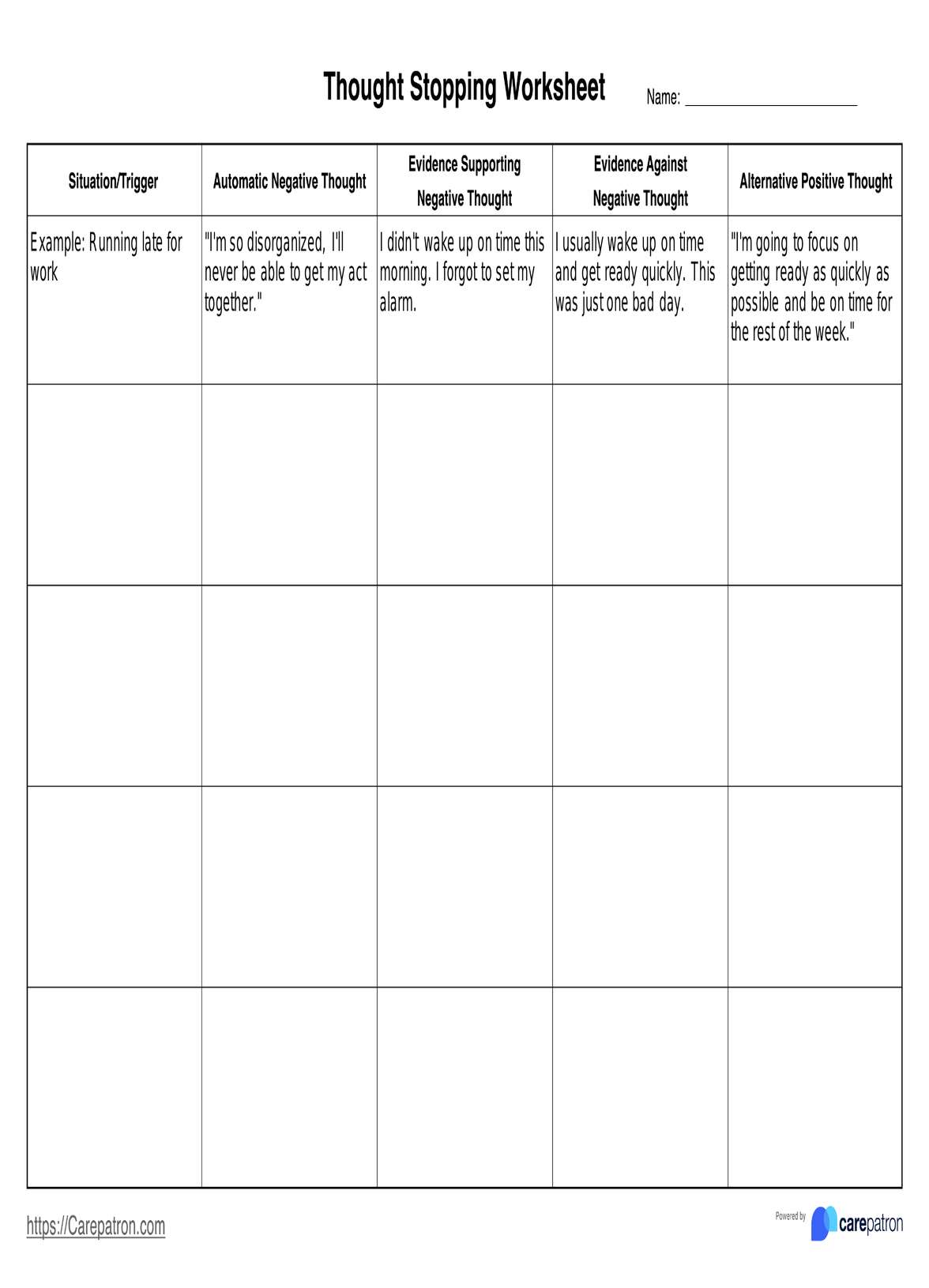
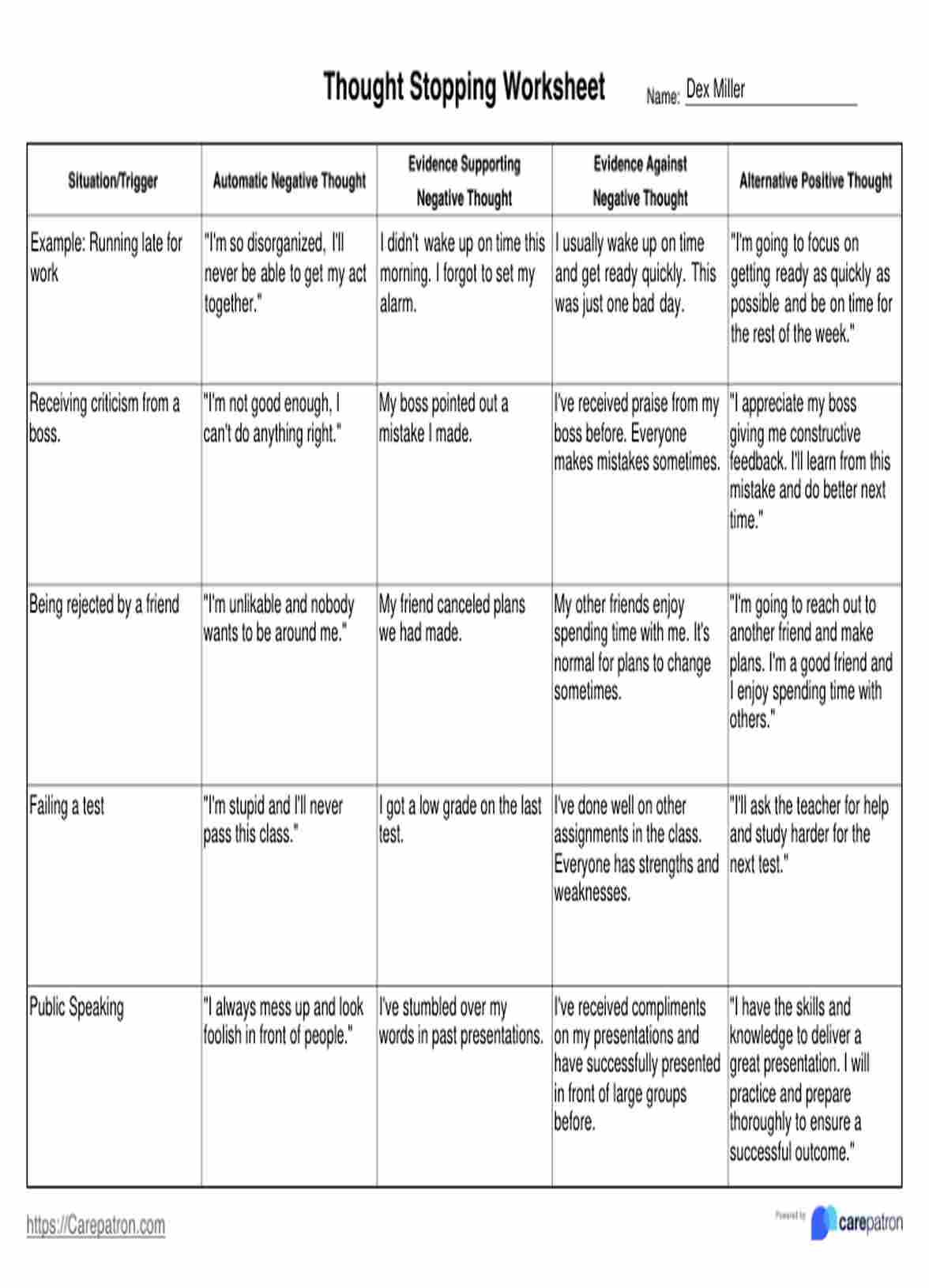















-template.jpg)





















































































